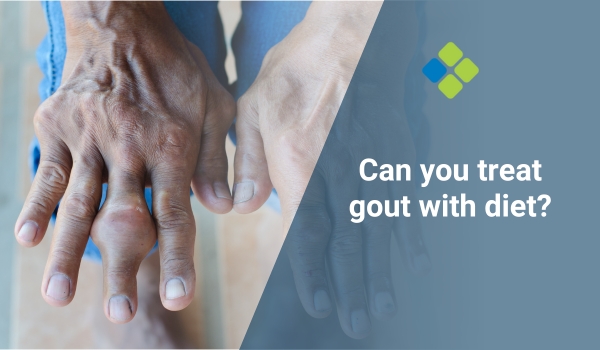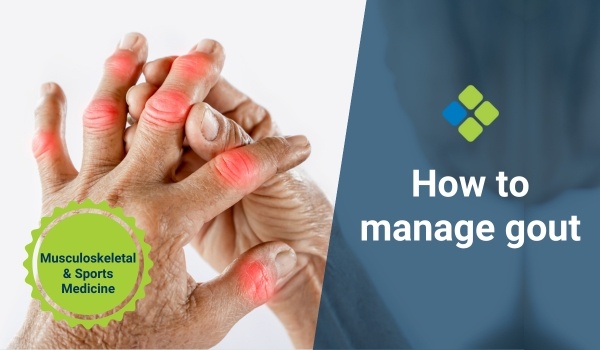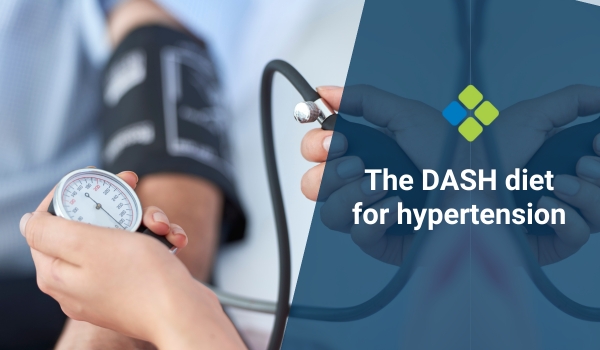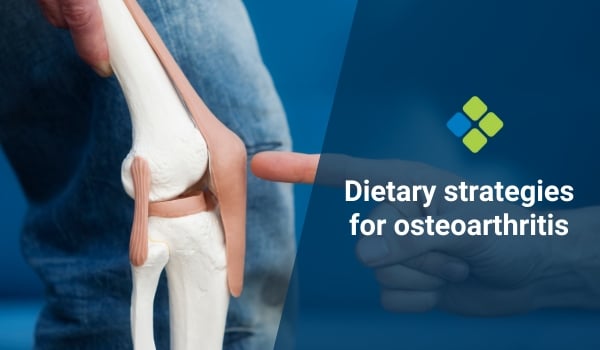Can you treat gout with diet?
Explore the latest research and nutritional recommendations that patients and GPs should consider for optimal management of gout.

HealthCert Education
Gout is a complex and common condition affecting 1.1 million Australians. This post aims to explore the latest research and nutritional recommendations that patients and primary care practitioners should consider for optimal management.
Learn more about medical nutrition therapy for gout in the HealthCert Professional Diploma program in Medical Nutrition Management - online nutrition training for GPs.
Gout is a form of inflammatory arthritis that occurs when excess uric acid in the blood (hyperuricemia, typically defined as serum urate concentration >6.8 mg/dL) and tissues leads to deposits of uric acid crystals in one or more joints, causing pain and inflammation (1).
Gout is associated with several comorbid conditions such as hypertension, chronic kidney disease, and coronary artery disease (2). Most patients with gout are managed in primary care (3); therefore, it is imperative that general practitioners develop holistic strategies that address the patient’s entire medical history and comorbidities, not just gout.
Where does diet come in?
Purines are typically the target of dietary recommendations for gout because they are broken down into uric acid in the body, with one study showing that high purine intake in the short-term increased the risk of a flare (4).
Foods that were historically included on “high” purine food lists include red meat, game meats, turkey, most types of seafood, some types of fish, beer, and organ meats. Some plant foods are also considered “high” in purine such as asparagus, mushrooms, green peas, spinach, cauliflower, beans, and oatmeal.
However, there are no data to suggest that a low purine diet improves gout symptoms, serum uric acid levels, or prevents gout (5). Although red meat and seafood have been associated with gout and hyperuricemia, plant foods higher in purines (such as soy foods and protein) do not appear to have the same effect (6). Most studies have found that soy foods and products do not increase the risk of gout or raise uric acid levels when consumed as part of a balanced diet (7, 8). In fact, it could be harmful to limit vegetables and other plant foods for people with gout, because consuming plant foods is beneficial for most other chronic conditions such as heart disease, kidney disease, and diabetes.
In addition, following a low purine diet can be difficult as there is no definition of how much purine constitutes a low purine diet and no cut-off to define a “low” or “high” purine food. Even if these definitions existed, the amount of purine is not listed on nutrition labels, making it nearly impossible to quantify how much purine is consumed. Instead, patients are often told to completely avoid certain “high” purine foods, which, without specific guidance, can be difficult to maintain.
Given these limitations, nutritional recommendations for gout have shifted to dietary patterns that are more palatable and support higher quality of life than limited low-purine diets. These include the Mediterranean and Dietary Approaches to Stop Hypertension (DASH) diets, both of which have been shown in research to attenuate serum uric acid and reduce the incidence of gout in participants (7, 9, 10). Depending on disease severity, practitioners may prescribe medications that help relieve gout symptoms.
Gout is a painful type of arthritis associated with hyperuricemia and the resulting deposition of crystal deposition in and around joints. Effective gout management includes drug therapy and dietary recommendations, the latter of which have been updated worldwide. Several whole dietary patterns can be tailored to suit patients’ comorbidity profiles and personal preferences.
Learn more about this topic in the online Professional Diploma program in Medical Nutrition.
- Lynette Law, Accredited Practising Dietitian
References
- Towiwat P, Chhana A, Dalbeth N. The anatomical pathology of gout: a systematic literature review. BMC Musculoskelet Disord. 2019;20(1):140.
- Singh JA, Gaffo A. Gout epidemiology and comorbidities. Semin Arthritis Rheum. 2020;50(3s):S11-s6.
- Pal B, Foxall M, Dysart T, Carey F, Whittaker M. How is gout managed in primary care? A review of current practice and proposed guidelines. Clin Rheumatol. 2000;19(1):21-5.
- Zhang Y, Chen C, Choi H, Chaisson C, Hunter D, Niu J, et al. Purine-rich foods intake and recurrent gout attacks. Ann Rheum Dis. 2012;71(9):1448-53.
- Nielsen SM, Zobbe K, Kristensen LE, Christensen R. Nutritional recommendations for gout: An update from clinical epidemiology. Autoimmun Rev. 2018;17(11):1090-6.
- Duan Y, Qi Q, Liu Z, Zhang M, Liu H. Soy consumption and serum uric acid levels: A systematic review and meta-analysis. Front. 2022;9.
- Yokose C, McCormick N, Choi HK. The role of diet in hyperuricemia and gout. Curr Opin Rheumatol. 2021;33(2):135-44.
- Choi HK, Liu S, Curhan G. Intake of purine-rich foods, protein, and dairy products and relationship to serum levels of uric acid: the Third National Health and Nutrition Examination Survey. Arthritis Rheum. 2005;52(1):283-9.
- Juraschek SP, Yokose C, McCormick N, Miller III ER, Appel LJ, Choi HK. Effects of dietary patterns on serum urate: results from a randomized trial of the effects of diet on hypertension. Arthritis & Rheumatology. 2021;73(6):1014-20.
- Rai SK, Fung TT, Lu N, Keller SF, Curhan GC, Choi HK. The Dietary Approaches to Stop Hypertension (DASH) diet, Western diet, and risk of gout in men: prospective cohort study. BMJ. 2017;357.

 1800 867 1390
1800 867 1390





